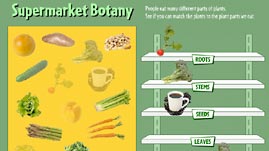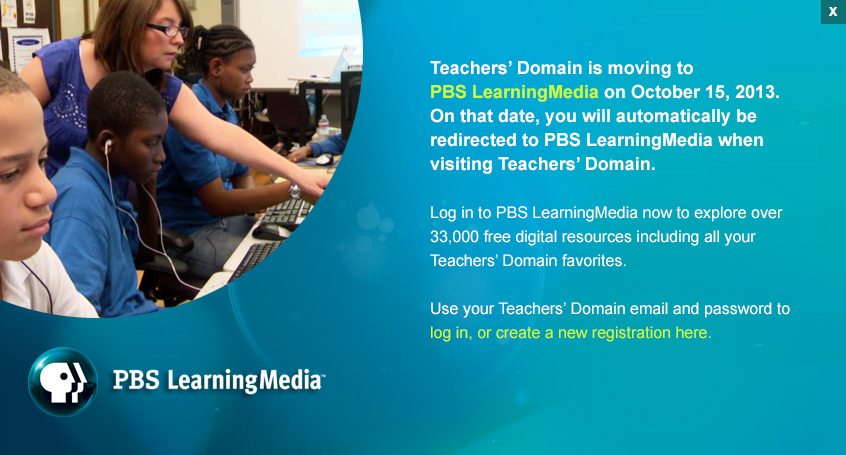Teachers' Domain - Digital Media for the Classroom and Professional Development
User: Preview

Source: Howard Hughes Medical Institute,
Missouri Botanical Garden
In this interactive activity adapted from the Missouri Botanical Garden and the Howard Hughes Medical Institute, categorize common foods while learning about plant structures and their functions. Supermarket foods like carrots, asparagus, lettuce, oranges, and peanuts are actually edible roots, stems, leaves, fruits, flowers, or seeds.
If you take a look around the produce section at a supermarket, you will find a wide variety of plants and plant structures. Lots of foods we eat every day—such as fruits, vegetables, and nuts—come from plants. In fact, we eat many different parts of plants such as roots, stems, leaves, fruits, and seeds. When we eat and digest plants, our bodies use the energy and nutrients that are stored in the plant cells.
Each part of a plant has a specific function. For example, roots grow downward into the ground and anchor the plant in the soil. They absorb water and nutrients to help the plant grow and can store energy for the plant. Carrots and sweet potatoes are thickened roots that we eat.
The leaves of a plant contain chlorophyll, a chemical that gives leaves their green color. In the process of photosynthesis, chlorophyll converts sunlight into sugar to create food for the plant. While leaves come in a variety of shapes and sizes, most are flat—a property that helps maximize the surface area exposed to sunlight. Spinach and lettuce are examples of leaves that we eat.
Stems serve as the pathways between roots and leaves. They are essentially tubes that pass liquids up and down to different parts of the plant. Stems are made of special cells that act as pipes. These pipes have a dual function: to bring down food produced by the leaves (through the phloem cells) and to bring up water and essential nutrients from the roots (through the xylem cells). In addition, stems hold the plant up and provide support, letting the leaves reach sunlight. Asparagus, rhubarb, and potatoes are stems that we eat.
Some plants produce flowers that contain reproductive organs for the plant. Broccoli heads are actually flower buds that we eat. When the flowers are pollinated, eggs inside the flower are fertilized and develop into seeds. Part of the flower then develops into a fruit that holds the new seeds. Interestingly, many foods that we call vegetables—like tomatoes, cucumbers, and peppers—are actually fruits because they contain seeds. In fact, the foods that we call fruits and vegetables are categorized somewhat arbitrarily: the term "vegetable" is merely a culinary term with no real scientific definition.
 Loading Standards
Loading Standards Teachers' Domain is proud to be a Pathways portal to the National Science Digital Library.
Teachers' Domain is proud to be a Pathways portal to the National Science Digital Library.
